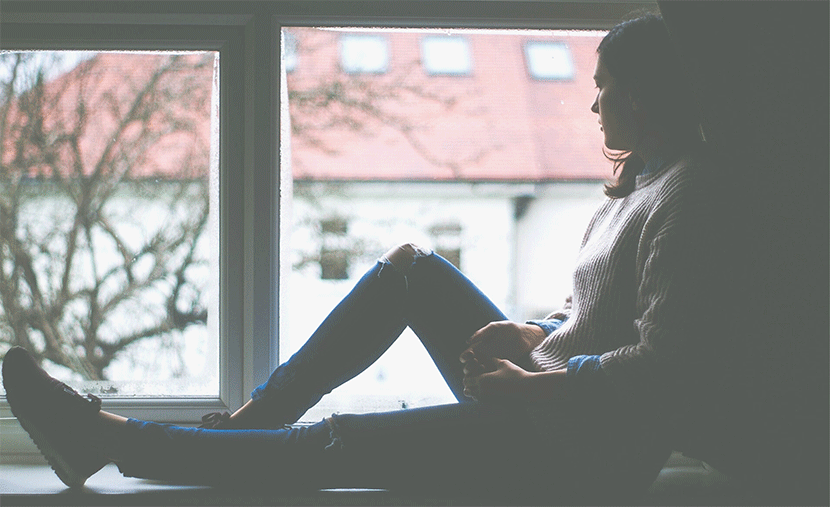Blog
Did you welcome lockdown round 2 with a sigh of relief? If so, read this
Thousands of Victorians have just begun the start of a second lockdown. And for some, the prospect of remaining indoors is music to their ears. For others, it will elevate fears of leaving home all the more. Whether the former or latter, both are likely suffering the effects of agoraphobia. So how has the pandemic worsened the situation – and what can we do about it?
What exactly is agoraphobia?
The word ‘agoraphobia’ originates from agora meaning ‘marketplace’ in Greek and phobia meaning ‘fear’.
It is the fear of being in spaces where you can’t easily escape, and where help isn’t readily available should you need it.
The condition is derived from panic disorder – so people who suffer it typically try to avoid situations like crowds, public transport or even queues (to avoid having a panic attack).
But in extreme cases, it can make an individual fearful of leaving their own home for anything at all – ‘just in case’ they end up caught in one of these situations.
Why agoraphobia is such a debilitating condition
Think about some of the most common places you visited (before the coronavirus pandemic, that is). Shopping centres. Congested trains. Busy workplaces.
Now imagine that you felt as though you had no choice but to avoid these places, just to keep your anxiety levels under control.
How would you get to work? And once you were there, how would you even function and perform your duties if your workspace was filled with people?
This is the reality for many people experiencing agoraphobia. It can be limiting – and often, extremely debilitating. And it can lead to long-term consequences if not managed or treated.
Agoraphobia and the pandemic
As part of the lockdown, we are being told to stay at home. And this means that people who were already suffering from agoraphobia are effectively being encouraged to self-perpetuate their condition.
This is because they are required to avoid the very thing that’s causing them the most distress: leaving home.
While at surface level this appears to be a positive, when it comes to overcoming such conditions, exposure is one of the best treatment methods.
But there’s also a flip side too…
Developing agoraphobia as a result of the pandemic
Since the pandemic began, we’ve already seen a rise of other anxiety-related disorders such as OCD, health anxiety and panic. Agoraphobia is another natural consequence for people who may have a predisposition to the condition.
While lockdown may exacerbate an individual’s pre-existing agoraphobia, it can also initiate it in people who haven’t experienced it before – because it inherently prompts avoidance behaviours.
If you’re someone who is already predisposed to the condition, when you’re faced with long periods indoors and a general feeling of anxiety, you could be at risk of developing agoraphobia.
The main issue is that the current situation normalises staying at home. And creating a habit of doing so is a trigger for agoraphobia.
At-home tips for agoraphobia during lockdown
If you think that you or someone you love is displaying agoraphobic tendencies, here are some useful things you can do to manage it:
- Maintain a good routine: Attempt to keep some normality in your life. This may involve maintaining a consistent schedule (eating and sleeping times, for example). Or it could be just as simple as getting dressed for work as if you were heading into the office. Whatever it is, try to stick to it as best you can.
- Remain connected: We’ve highlighted the importance of connection before. But as social beings, we can’t overestimate the power our connections can have on our mental health.
- Approach difficult situations gradually: Eventually, you’ll have to experience an uncomfortable situation – like leaving the house or being in a crowd. Try and do so in a manner that allows you to gradually build confidence as you overcome your fear. It might mean visiting the supermarket with the support of someone trusting by your side, for example.
- Try diaphragmatic breathing techniques: Diaphragmatic breathing can help activate your parasympathetic nervous system and make you feel more relaxed. When you’re feeling overwhelmed or anxious, try placing one hand on your stomach and another on your chest. Then take a deep breathe in and watch your bottom hand rise as the air fills your lungs. Watch it fall as you gently breathe out.
- Practice cold water facial immersion: When you immerse your face in cold water, this activates the diving response – an innate human adaption that will slow down your heart rate and help your body regulate anxiety.
When is it time to see a professional?
Like many other anxiety conditions, exposure is one of the most effective treatments.
Although that’s probably not the news you want to hear, doing so in the company of a therapist can help.
One of the newest (and widely successful) techniques some of our practitioners have introduced for treating agoraphobia is Virtual Reality Exposure Therapy (VRET).
VRET is designed to help people overcome specific phobias. It utilises technology by replicating real environments virtually. This allows us to expose our clients to specific objects or situations without leaving the safety of the therapist’s office.
During application, the therapist has control over the virtual situation and its gradation. This allows for immediate feedback on what our client is feeling – and the ability to modify as necessary.
If you suspect agoraphobia or its tendencies could be affecting you or a loved one, we provide a range of treatment techniques (including VRET) to help you overcome it. And as always, we still offer sessions via telehealth. Contact us today by calling 1300 995 636.

